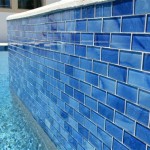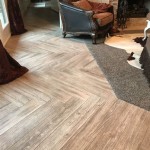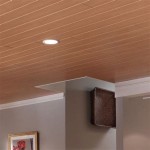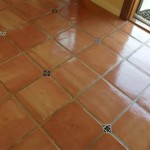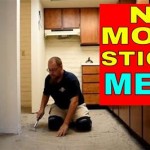Can You Tile Over Sheetrock In a Shower: Understanding the Risks and Alternatives
The question of whether to tile over sheetrock in a shower is a common point of concern for homeowners undertaking bathroom renovations. While seemingly a time-saving and cost-effective approach, tiling directly over standard sheetrock (also known as drywall) in a shower environment presents significant risks that can lead to costly and potentially hazardous consequences. This article will delve into the reasons why this practice is generally not recommended, explore the potential problems that can arise, and outline suitable alternative materials and methods for creating a durable and waterproof shower enclosure.
Sheetrock, essentially gypsum board, is a porous material. Its composition includes a gypsum core encased in paper. This structure is not inherently waterproof or even water-resistant. When exposed to moisture over extended periods, sheetrock can readily absorb water. This absorption leads to a degradation of the gypsum core, causing the material to soften, crumble, and ultimately lose its structural integrity. The paper facing can also detach and promote mold growth.
In a shower environment, where constant exposure to water and humidity is inevitable, tiling directly over sheetrock creates a recipe for disaster. Even with grout and sealant, water can penetrate the tile surface through hairline cracks in the grout, imperfections in the sealant application, or even through the grout itself, which is porous to some degree. Once moisture reaches the sheetrock behind the tile, the deterioration process begins.
The consequence of this moisture penetration is not limited to cosmetic damage. The softening and crumbling of the sheetrock can cause the tiles to lose their adhesion, leading to cracking, loosening, and eventual tile fallout. This can create a hazardous situation, and the structural damage can extend beyond the shower area, impacting the surrounding walls and potentially the floor below. Furthermore, the presence of moisture and decaying organic material (the paper facing of the sheetrock) creates an ideal breeding ground for mold and mildew. Mold growth not only causes unsightly stains and unpleasant odors but can also pose serious health risks, particularly for individuals with allergies or respiratory sensitivities.
Therefore, while tiling directly over sheetrock might seem like a quick and easy solution, the long-term risks and potential costs far outweigh any perceived benefits. Adhering to industry best practices and utilizing appropriate moisture-resistant materials is crucial for ensuring a safe, durable, and long-lasting shower enclosure.
Understanding the Key Vulnerability: Water Penetration
The primary reason why tiling directly over sheetrock fails in a shower environment is the inherent vulnerability of sheetrock to water penetration. While grout and sealant are intended to create a waterproof barrier, they are not foolproof. Microscopic cracks, pinholes, and imperfections in the application can allow water to seep through. Grout, even when sealed, is still a porous material and can absorb some moisture. Over time, the constant exposure to water and steam in a shower environment will inevitably lead to moisture reaching the sheetrock behind the tile.
Moreover, the movement and expansion/contraction of the shower walls due to temperature and humidity fluctuations can further exacerbate the problem. These movements can create stress points in the grout and sealant, leading to cracks and vulnerabilities that allow water to penetrate. The type of grout and sealant used also plays a critical role. Inexpensive or poorly applied materials are more prone to failure and water penetration. Even with high-quality materials, proper installation techniques are essential to ensure a watertight seal.
The design of the shower itself can also contribute to the problem. Showers with multiple showerheads or body sprays, for example, will subject the walls to a higher volume of water, increasing the likelihood of water penetration. Similarly, showers with a small footprint or poor ventilation will experience higher humidity levels, which can accelerate the deterioration of the sheetrock.
The cumulative effect of these factors is that, despite the best efforts to seal the tile surface, water will eventually find its way behind the tile and into the sheetrock. This moisture will then begin to degrade the sheetrock, leading to the problems described above.
Acceptable Alternatives: Moisture-Resistant Backing Boards
Instead of sheetrock, several moisture-resistant backing board options are specifically designed for use in wet environments like showers. These materials offer superior protection against water damage and provide a stable substrate for tile installation. Some of the most common and effective alternatives include:
* Cement Board: Cement board is a rigid, durable material made from cement, aggregates, and reinforcing fibers. It is highly resistant to water damage, mold growth, and impact. Cement board is typically installed over studs and provides a solid, stable surface for tile. It needs to be properly sealed at the seams with cement board tape and thin-set mortar to create a continuous waterproof barrier. Popular brands include Durock, HardieBacker, and WonderBoard. * Glass Mat Gypsum Board: This type of board replaces the paper facing of traditional sheetrock with a fiberglass mat. This makes it significantly more resistant to water absorption and mold growth. While more water-resistant than standard sheetrock, it is still important to properly seal the seams and fasteners to create a waterproof barrier. DensShield is a well-known brand. * Waterproof Membrane Systems: Rather than relying solely on the backing board for waterproofing, some systems incorporate a waterproof membrane applied over the backing board. These membranes can be liquid-applied or sheet membranes. Liquid-applied membranes, such as RedGard or Hydro Ban, are applied like paint and create a seamless waterproof layer. Sheet membranes, such as Kerdi, are bonded to the backing board with thin-set mortar to create a watertight seal. * Extruded Polystyrene (XPS) Boards: These boards are made from closed-cell foam, making them completely waterproof. They are lightweight, easy to cut and install, and provide excellent insulation. XPS boards are often used as a substrate for tile in shower floors and walls. Wedi board is a common example.When choosing a backing board, it is important to consider the specific requirements of the project, including the size and design of the shower, the type of tile being used, and the manufacturer's recommendations. Proper installation is crucial to ensure the effectiveness of any backing board. This includes following the manufacturer's instructions for cutting, fastening, and sealing the seams. Using the correct fasteners and applying the appropriate sealant or waterproofing membrane are essential for creating a watertight barrier.
The Importance of Proper Installation and Waterproofing Methods
Even with the most appropriate moisture-resistant backing board, proper installation and waterproofing methods are paramount to achieving a durable and waterproof shower enclosure. The best materials can fail if not installed correctly. This includes several key steps:
* Stud Spacing and Framing: Ensure the shower framing is properly spaced and aligned. Uneven framing can lead to stress points in the backing board and tile, increasing the risk of cracks and water penetration. * Backing Board Installation: Follow the manufacturer's instructions for cutting, fastening, and spacing the backing boards. Use the correct type of fasteners and ensure they are properly embedded. Leave a small gap between the boards to allow for expansion and contraction. * Seam Sealing: Properly seal the seams between the backing boards with cement board tape and thin-set mortar or a suitable sealant recommended by the backing board manufacturer. Ensure the tape is fully embedded in the mortar or sealant and that the surface is smooth and even. * Waterproofing Membrane Application: If using a waterproofing membrane, follow the manufacturer's instructions for application. Apply the membrane evenly and ensure it covers all seams, corners, and penetrations. Allow the membrane to cure completely before tiling. * Grout and Sealant Selection: Choose a high-quality grout specifically designed for wet environments. Consider using epoxy grout, which is more resistant to water penetration and staining than cement-based grout. Apply a high-quality sealant to all corners, edges, and penetrations after the grout has cured. * Regular Maintenance: Regularly inspect the grout and sealant for cracks or damage. Reapply sealant as needed to maintain a watertight seal. Clean the shower regularly to prevent the buildup of soap scum and mildew.Engaging a qualified and experienced tile installer is highly recommended to ensure that the shower enclosure is properly constructed and waterproofed. A professional installer will have the knowledge and skills to select the appropriate materials, prepare the surface properly, and apply the waterproofing system correctly. They will also be familiar with local building codes and regulations related to shower construction.
In conclusion, while tiling over sheetrock in a shower might seem like a tempting shortcut, the inherent risks associated with this practice far outweigh any potential benefits. Investing in moisture-resistant backing boards and proper waterproofing methods is essential for creating a durable, safe, and long-lasting shower enclosure. Prioritizing quality materials and professional installation will save time, money, and potential health hazards in the long run.

Tile Over Drywall Showers A Common But Bad Practice Scott Hall Remodeling
Can You Put A Ceramic Wall Tile On Sheetrock For Basement Shower Quora

Can You Tile Over Drywall Master Building Materials Blog

How To Tile Over Sheetrock Doityourself Com

Can You Tile Over Drywall Master Building Materials Blog

Waterproof Bathtub Shower Walls Over Drywall

The Complete Guide To Installing Tile On Shower Or Bathtub Walls

Drywall To Backerboard Transition In Tiled Showers The Floor Elf

How To Tile Over Existing Brepurposed

The Tile Journal Of Hamilton In Woodstock Ga
Related Posts

